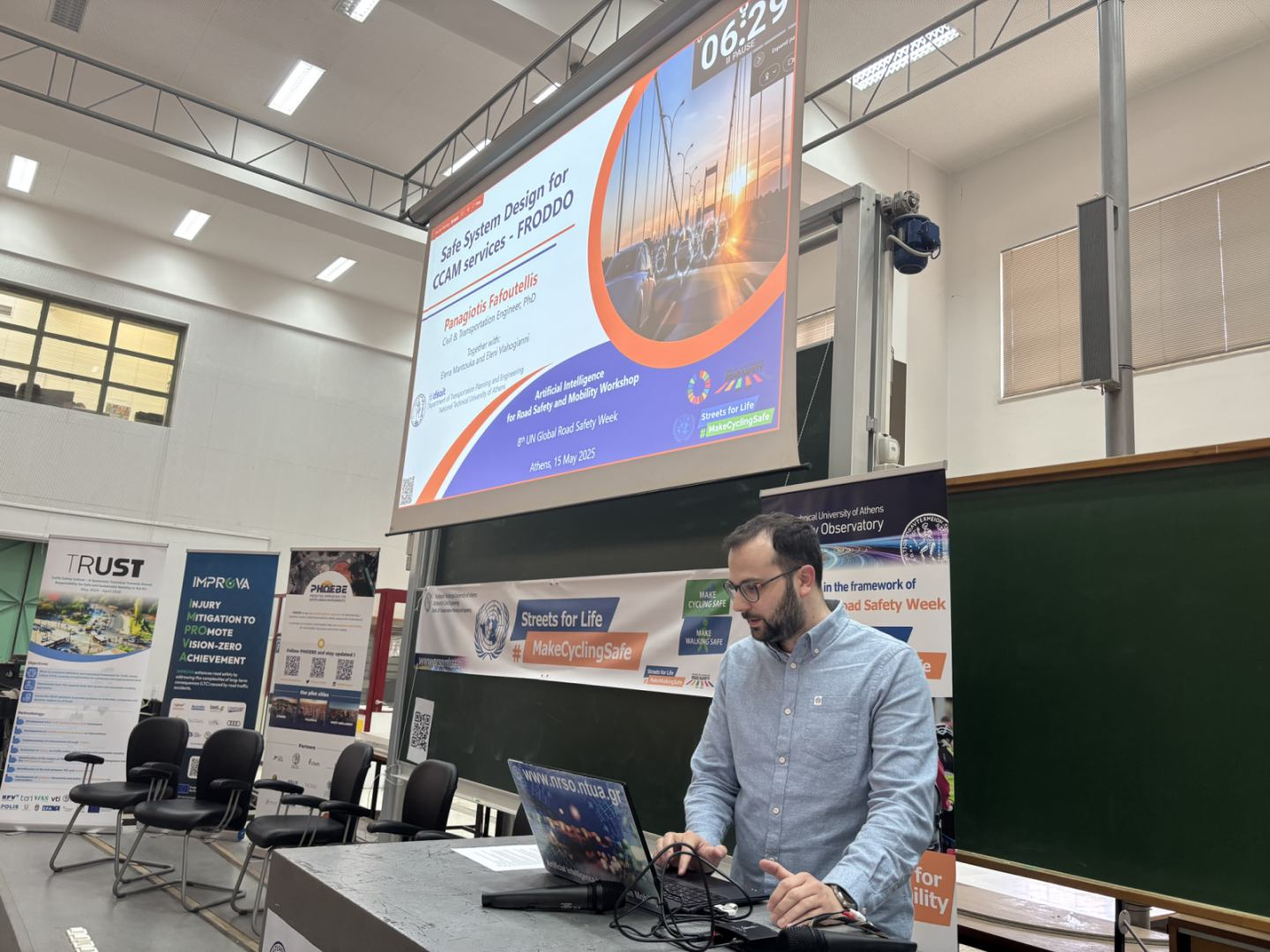On May 15th, 2025, the FRODDO project was prominently featured at the Artificial Intelligence for Road Safety and Mobility Scientific Workshop, held in Athens and online. Dr. Panagiotis Fafoutellis from the National Technical University of Athens (NTUA) delivered a comprehensive presentation of FRODDO, showcasing the project’s innovative work in AI-assisted traffic management and smart mobility.
The workshop, organized by the NTUA Department of Transportation Planning and Engineering, brought together experts, researchers, and stakeholders from across Europe, with more than 20 research projects presented throughout the day. The event provided an excellent platform for sharing cutting-edge research and exchanging knowledge on how artificial intelligence is shaping the future of road safety and mobility.




